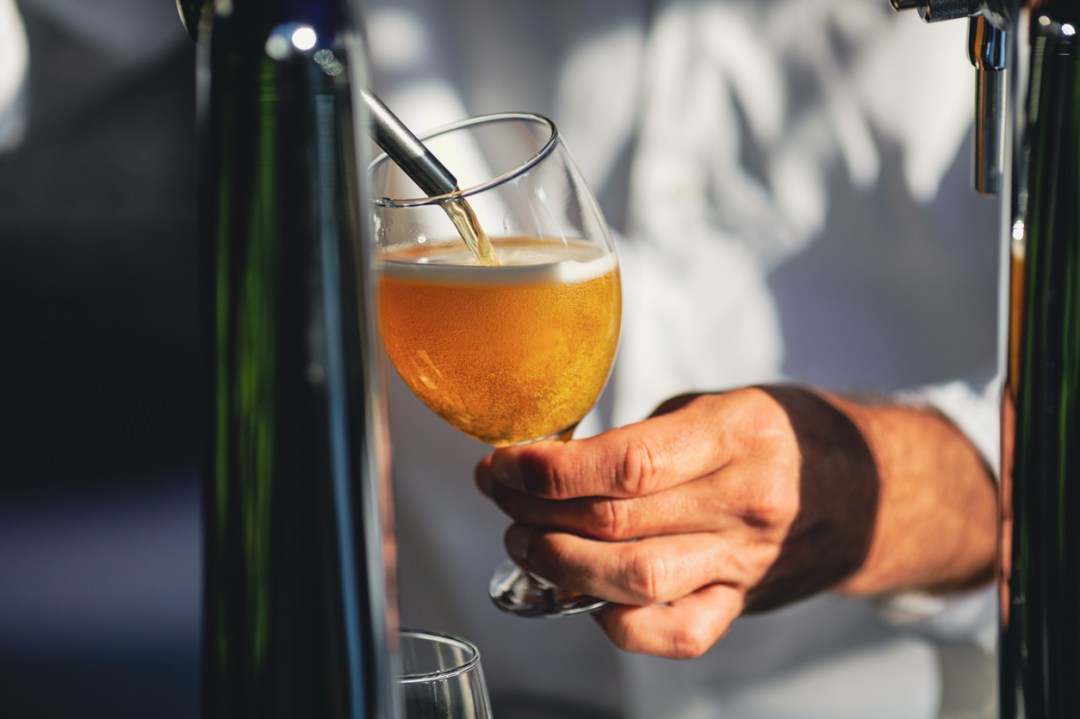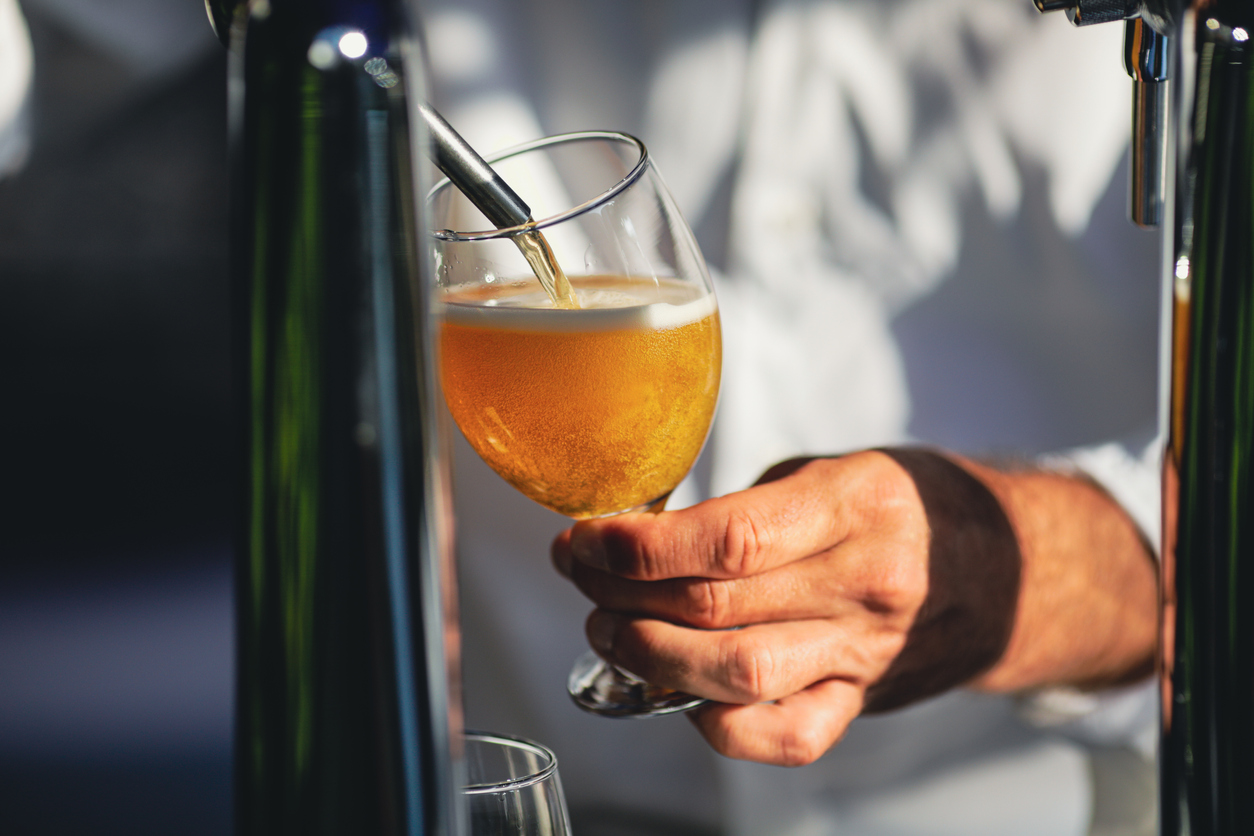I always thought drinking cider was a bit lame. But then I did a Camino pilgrimage that took me through Spain’s northern Asturias region. I now think cider is cool.
Cider is a phenomenon in Asturias, where the art of imbibing sidra, as it is called, is elevated to a ceremonial form. We have the Trooping the Colour; they have sidra pouring.
When the barman pours the sidra bottle from above his head, the glass down at knee level, while looking dead ahead with the subsequent mini waterfall hitting the glass through dead reckoning: that’s not lame. The pourer even tilts the glass away from him, dramatically shrinking the ‘aperture’ available at the top of the glass.
The theatrical pouring method, as well as being an obvious crowd pleaser, oxidises the sidra (I’ve been made to cough by the resulting sweet effervescence).
Bar staff only pour about two centimetres worth of sidra into your glass, which you down straight away – like drinking shots – to get the full impact of the oxidisation effect. Hence cider goes to your head quickly in Asturias. That may explain why locals often turn heads to the side when downing their sidra, as if trying to conceal their reckless abandon.
Cider goes to your head quickly in Asturias
If you want to try a dramatic pour yourself, bars typically have a long conical bucket that has a slit running down it, through which you can hold you glass. A fair bit of sidra usually goes wide of the target and into the pool at the bottom of the bucket before you get your aim in. Fortunately, a bottle of Asturias sidra tends to go for around €3 or less.
Most bar staff are pretty accurate, though accuracy levels vary. One of the deadliest sidra snipers I encountered was a pale-faced teenager in a hoodie and baggy trousers in a sidraria – the local name for cider bars – beside the train station in the town of Mieres.
Giving a classic demonstration of what is referred to as ‘flow’ in creative psychology or being in the zone: he didn’t even think about it or take a moment to compose himself; he just lofted that bottle above his head, and, bingo, the sidra went straight into the glass around his knee somewhere beneath those baggy trousers.
With the aid of the communal sidra bucket, I tried a few self-pours. But as my aim got unavoidably worse the more oxidated sidra I drank, the bar boy came to my rescue – and each pour was spot on.
When I left, he gave me a big grin and motioned with his extended thumb and little finger the Spanish gesture for a good drink. He knew his precision sidra pours had hit the bullseye, both in terms of the glass and in the head of the consumer.
The bountiful apple trees in the lush green Asturian valleys are responsible for the endless sidra-filled green bottles that dominate bars and local’s drinking habits across the region.
In Mieres, as in other Asturian towns, whole streets are given over to rambunctious sidra-flowing taverns full of outstretched arms, sidra bottles high in the air and pairs of eyes gazing into the distance.
One of my most fulfilling sidra pours occurred in the city of Oviedo at a bar in view of the gothic-style cathedral and beside it a stirring statue of Alfonso II, also known as Alfonso the chaste, clad in Visigothic armour, a hand on his chest and a saintly expression on his face.
Having hiked around 25 kilometres that day to get to Oviedo, my blood stream was already well oxygenated. With the addition of oxidised sidra pours, it meant that during a subsequent tour of the cathedral’s spectacular treasures housed in its Holy Chamber – a Unesco World Heritage site – I was rather susceptible to the magisterium on offer.
That the ethereal and gem-studded Cruz de la Los Ángele – Cross of the Angels, and which also serves as the city’s symbol – was made by angels seemed about right in the moment. As too that the Agate Box, a treasure chest-like repository said to contain precious relics from Jerusalem and covered in sublime silver carvings, was made by followers of the 12 Apostles.
The cathedral also contains, beside the main altar, a 13th-century polychrome stone statue of El Salvador, representing Christ the Redeemer making a blessing with his right hand and holding the cosmic orb in his left. Despite looking a bit like an oversized character from a Punch and Judy show, there’s something undeniably mystical about the statue. It was enough for Pope John Paul II to pray at its feet on 20 August 1989.
It’s a lot to take in – especially post-sidra waterfalls – and is why Oviedo cathedral exists as a pilgrimage destination in its own right, alongside the more famous Camino destination of Santiago de Compostela.
There is a fragment from a French song that says: ‘Whoever goes to Santiago and not to the Saviour visits the servant and forgets the Lord’. The song might also have noted that you should visit the wonderful cathedral and precious relics before you have that heady bottle of oxidised sidra in front of Alfonso the Chaste.
While of course making sure to turn your head away from his virtuous gaze as you glug down your sidra and try not to cough.







Comments